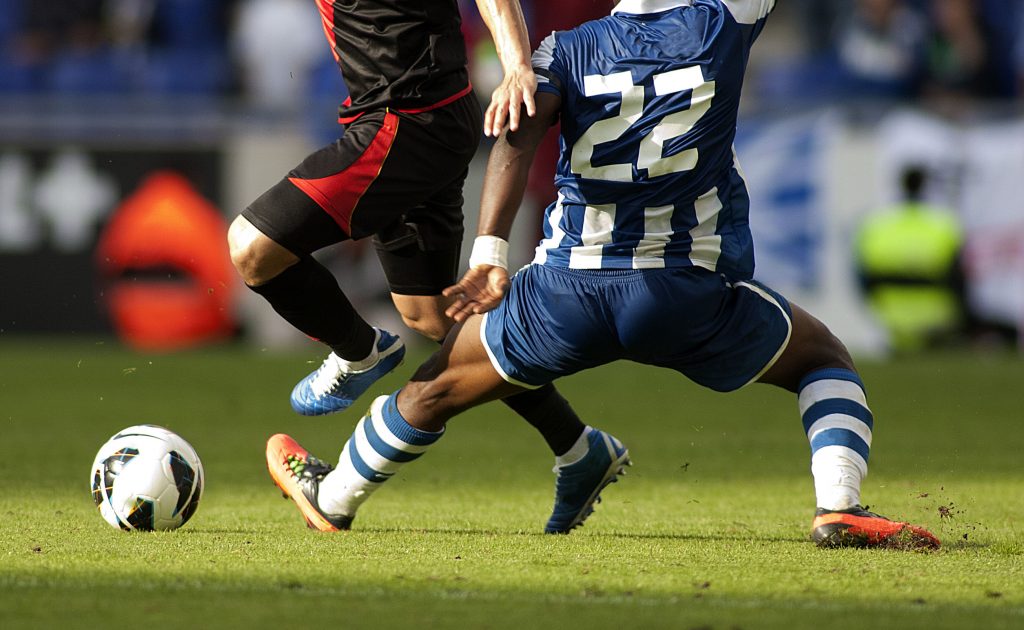Groin strains can be a stubborn son-of-a-bitch. Once you have one, it’s one of those pesky injuries that never really seems to go away. In today’s guest post by strength coach and physical therapist, Sam Spinelli, he breaks down some common ways to resolve the issue.
Awesome stuff.

How to Train Around a Groin Strain
Groin strains are often a hard problem for people to manage. We see them present in many different populations and occur with a wide range of activities. Strains are common in sports such as baseball, hockey and soccer where this is a huge demand on the groin.
With the groin musculature being a collection of numerous muscles, it is involved in so many different movements – flexing the hip, extending the hip, bring the knee towards midline, internally rotate the hip, and externally rotate the hip.
Due to the involvement in these movements, the “groin” can get stressed while performing them, but also get strained when the opposing movements are done as well.
For example, the adductor brevis (one of the higher up groin muscles) acts to adduct, internally rotate, and flex the hip.
If strained, during those three movements the muscle will be challenged to contract.
In contrast, during hip abduction, external rotation, and extension the adductor brevis will get lengthened. When the adductor brevis is strained, excessive lengthening can increase the damage to the vulnerable tissue.
The first step to managing these strains is to get things to calm down. Check out THIS article for more on that in regards to strains.
Get Long
When we say get long, we are talking about having someone comfortable with allowing the involved musculature to elongate.
This isn’t trying to lengthen the actual tissue – which is a topic we will discuss in a separate article/video series – but have the tissue be able to express the range it actually has with ease.
Below is a series of options – foam rolling, less dynamic movements, and more dynamic movements.
We start off with foam rolling as a means of helping in the short term, which we can use to help reduce the perception of tone in the tissue. Ideally this is used only briefly and removed as soon as possible so we are not relying upon it.

The less dynamic movements are one which have less involved movement, fewer joints involved, and more support. These are a great starting point for moving and reducing fear in individuals coming off a groin strain.
The more dynamic movements are things that will have more transfer to daily life and sporting activities.
Once we are in the phase of building things up, we will shift our focus to exercises to help make the tissue more resilient. In particular, we are going to start off with an approach to get long and get strong.
Soft Tissue – Adductors
Split Stance Adductor Mobilization
Frog
Frog 2.0
Lateral Lunge
Cossack Lunge
Cossack Squat
Get Strong
A muscle that is stronger can handle more stress placed upon it. This is why developing the musculature related to this injury can help in the future. In particular, we will look to increase the strength of the groin muscles, but also that of the abdominals.
When we look at where most of the groin muscles originate, we can see they share a common insertion with some of the abdominal muscles. This can be like a tug of war between the muscles. If we have one side not holding up its part, then we can be left with imbalanced force production and a not optimal tension-length relationship. This is often overlooked and can lead to reoccurring issues – which is why we address it here.
We use a similar approach here of utilizing less dynamic movements initially to help target the groin muscles, then build in more dynamic movement and load over time.
For the abdominals we use an approach of challenging the abdominals in both a isometric and isotonic format. This helps to integrate static strength to hold position, but also strength in being able to manipulate the pelvic positioning.
Adductor Strengthening
Side Lying Adduction
Feet Elevated Side Plank – Top Leg Only
Feet Elevated Side Lying Adduction
Lateral Lunge – DBs
Lateral Lunge – 1 Rack
Band Resisted Lateral Lunge
Abdominal Strengthening
Reverse Crunch
Hanging Knee Raise
Hard Style Plank
An Example Introductory Session
Upper Body Lift +
A1. Split stance adductor mob x10 x3sets
A2. Side lying adduction x10 x3 sets
B1. Frog x10 x3 sets
B2. Reverse Crunch x10 x3sets
As you start to build strength and comfort, we can progress to:
Modified Lower Body Lift (RFESS, deadlifts, etc.) +
A1. Lateral Lunge – DBs x6 x3sets
A2. Hard style plank – 3(10s) x3sets
B1. Feet elevated side plank – top leg only x3(10s) x3 sets
B2. Hanging knee raise
Wrap Up
Over time you would want to keep progressing the variations while also building to more advanced movements involving power, agility, and requiring greater motor control of positioning.
Move well, lift heavy, stay healthy,
Author’s Bio
Sam Spinelli is cofounder of The Strength Therapist, a company devoted to educating people about strength training for rehab and performance.
Coming from the great white north of Canada, Sam spent 5 years working with high level hockey as a strength and conditioning coach. Currently he has taken up a nomad status in the United States to pursue his doctorate of physical therapy and hang out with really smart people (Like Tony G).
Outside of spending his time reading research papers and drinking coffee, he is a competitive strength athlete in sports such as powerlifting, weightlifting, and strongman.
Website – thestrengththerapist.com
Instagram – https://www.instagram.com/
Facebook – https://m.facebook.com/The-



